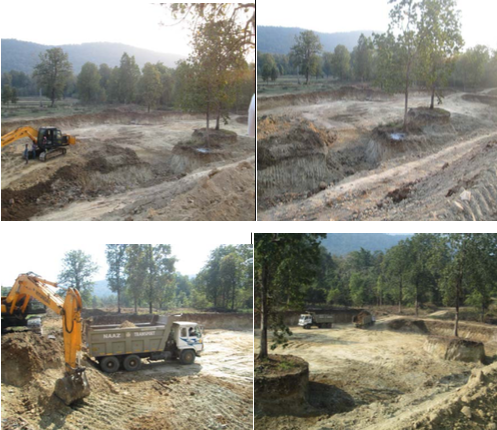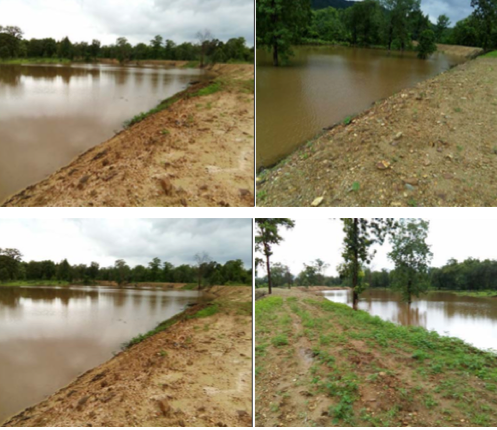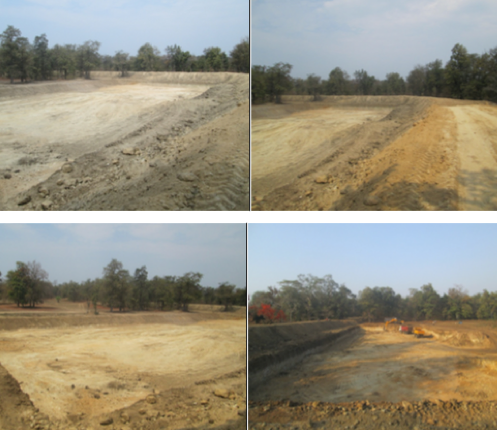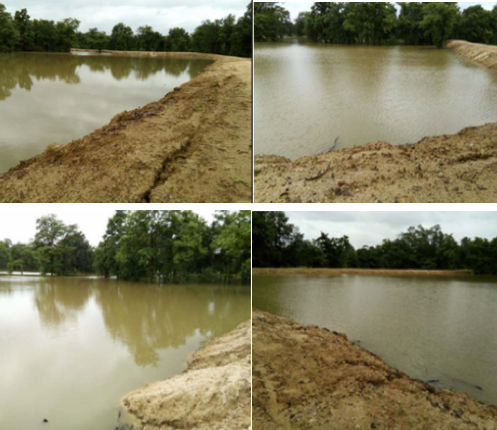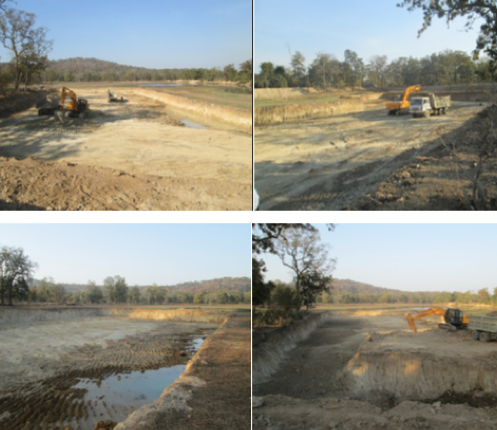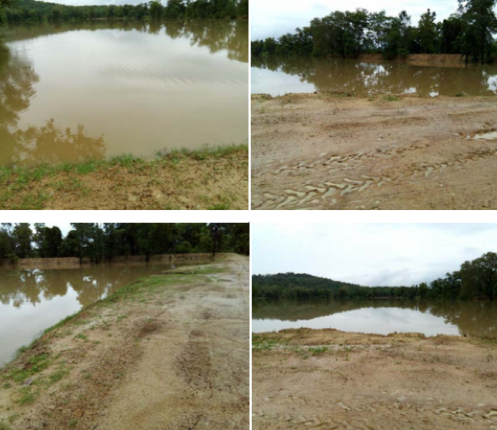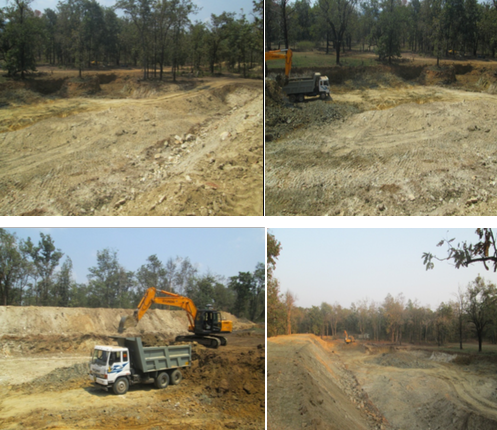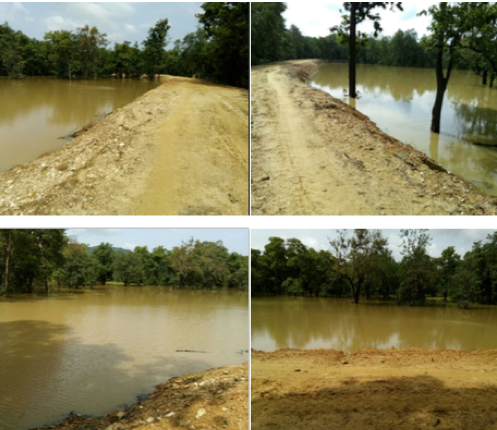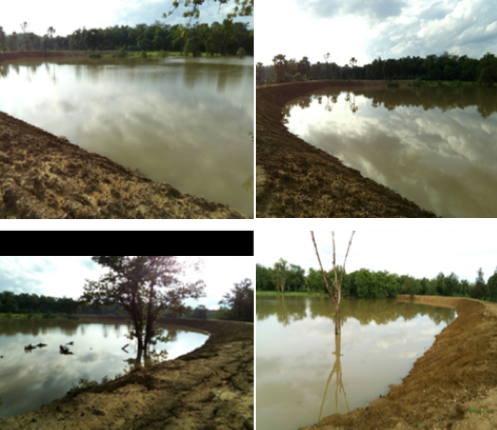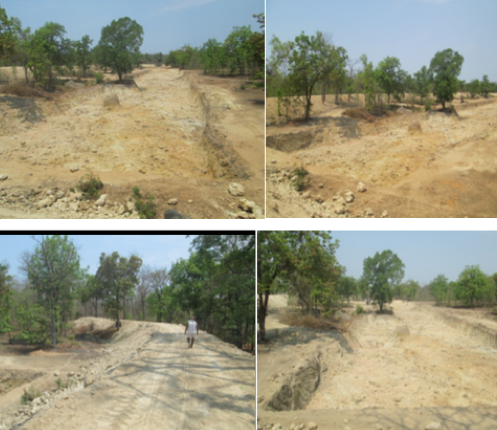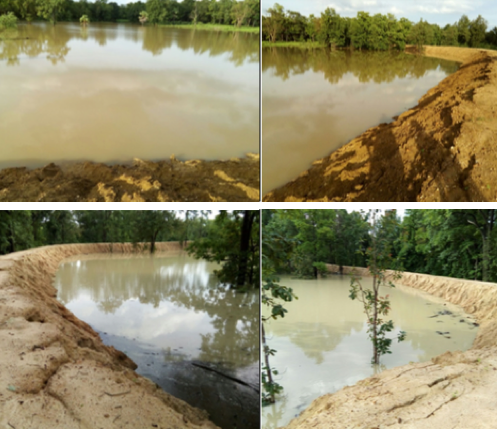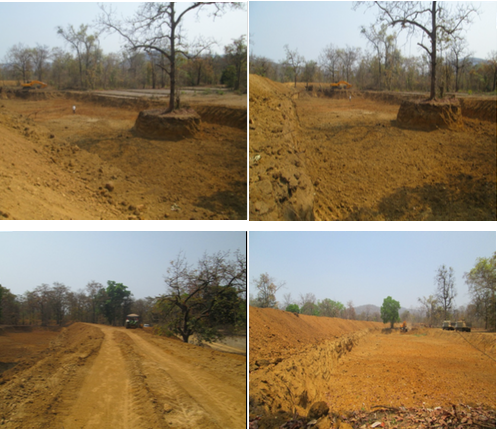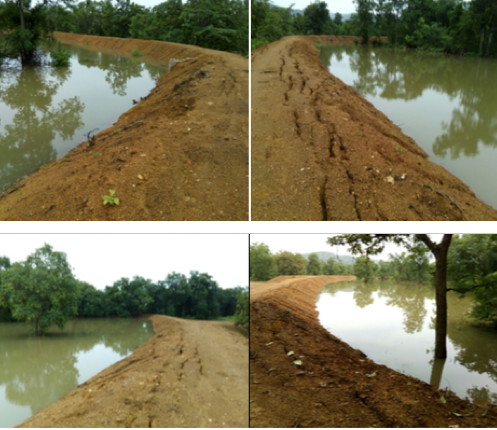Lok Biradari Prakalp decided to use the tribal's bamboo handicraft skillset to uplift their earnings. As a first step, the Prakalp started purchasing all bamboo handicrafts from locals irrespective of the quantity or condition of material. We receive the handicrafts regularly from nearby villages like Koyanguda, Kiyar, Bejur, Laheri, Bangaadi, Podewada, Inbatti etc.
Mr. Shridhar and Mr. Munshi from the Prakalp conducted training few years back in these villages for the new generation. Each group had about 40-50 men and women. Villagers were taught to make bamboo artefact such as bamboo boxes, toy ships, show-pieces to promote bamboo handicraft.
The Prakalp has a training center which is handled by 6 volunteers right now. Students from Lok Biradari Aashram Shala, Hemalkasa and people from nearby villages enroll to this center regularly.
Bamboo handicraft sale center in the Prakalp displays collected material. People who come to see the Prakalp also visit this center regularly and purchase goods.
In January 2018, an exhibition of these goods was conducted at Hiranandani Estate, Powai, Mumbai. On 15 April 2016, Lok Biradari Mitra Mandal, Dombivali (Mumbai) arranged an exhibition. Pune Mitra Mandal, Pune also used to book orders regularly in the past.
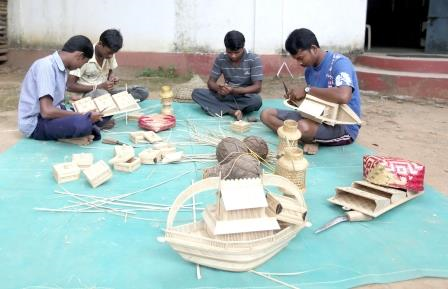
Lok Biradari Prakalp has a dairy with 17 cows, 5 buffaloes and 2 Walu (bull). They are milked 2 times a day. About 30 liters are collected every day. In rainy season, it goes upto 45 liters per day.
The milk is used in mess of the Prakalp and also for the animals in Animal Ark. As food, the dairy animals are given cattle food, sorghum, corn and grass.
To maintain hygiene, they are washed every day. A team of 7 fulltime volunteers take care of the dairy. Deworming is done once in 3 months and vaccination is done once a year.
In summer time, temperature goes very high in this part of the region. So, the cowshed is covered with green cloth. Also, water springs and fans are used to keep the temperature in control.
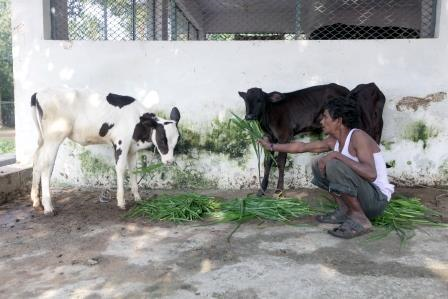
Lok Biradari Prakalp has a poultry which has 40 Kadaknath and 500 broiler hens. Kadaknath gives 20 eggs every day which are fed to the animals in Animal Ark. Broilers are fed directly to these animals. The Prakalp buys 300-500 broilers every one and a half month.
The hens need special food which is bought from market. There are 3 types namely prestarter, starter and finisher. These are fed according to the age group of hens in ascending order.
A team of 7 fulltime volunteers take care of the poultry. Vaccination is done once in a week.
In summer time, temperature goes very high in this part of the region. So, the hen shed is covered with green cloth. Also, coolers are used to keep the temperature in control. In winter, yellow bulbs are used in hen shed to increase temperature.
When the Lok Biradari began functioning there had been no plan to set up a school. It was dictated by circumstances. But formal education through the school was not the only kind of teaching the organization did. Agricultural extension activity was an important part. Traditionally the Madia Gonds grew no vegetables. They raised millets and rice, and drew all the rest of their wants from the forests. They ate all sorts of animals: dogs, cats, ants, birds, monkeys, etc, often drying the meat to preserve it so that they could eat it later.
The LBP began by distributing hybrid paddy varieties to the tribals so that they could get higher yields. They also used to distribute vegetable and fruit seeds. Simultaneously they organized demonstration plots, both on its own land and in tribal villages. The students in the Lok Biradari School too were taught improved agricultural techniques and they proved to be good ambassadors in their own villages. So successful have they been that almost all the tribals have now begun to grow vegetables and fruits. The government too has started distributing hybrid seeds, so the LBP has stopped doing so to avoid duplication of efforts.
Another important activity was to provide life-saving irrigation to tribal farmers. Sometimes the rains would vanish for a few days or weeks right in the middle of an important growth phase for crops. During this period the LBP would offer their diesel pumps to the tribal farmers on condition that the farmers paid for the cost of the diesel. This activity still continues, but in a limited way, because many farmers now have their own diesel pumps bought with a 100% subsidy from the government. The LBP still provides training to such beneficiaries and later helps out by repairing those pumps that fail. About 20 pumps are repaired every year. Spray pumps to spray insecticides and pesticides are still lent to farmers. There is even a government handpump repair unit at Bhamragad. Even so the LBP repairs about 10-12 handpumps every year.
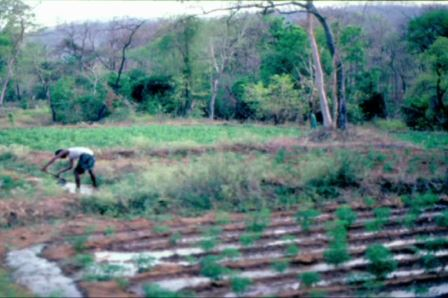
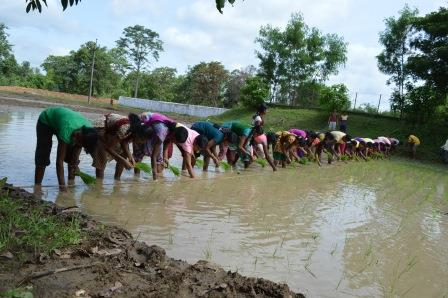
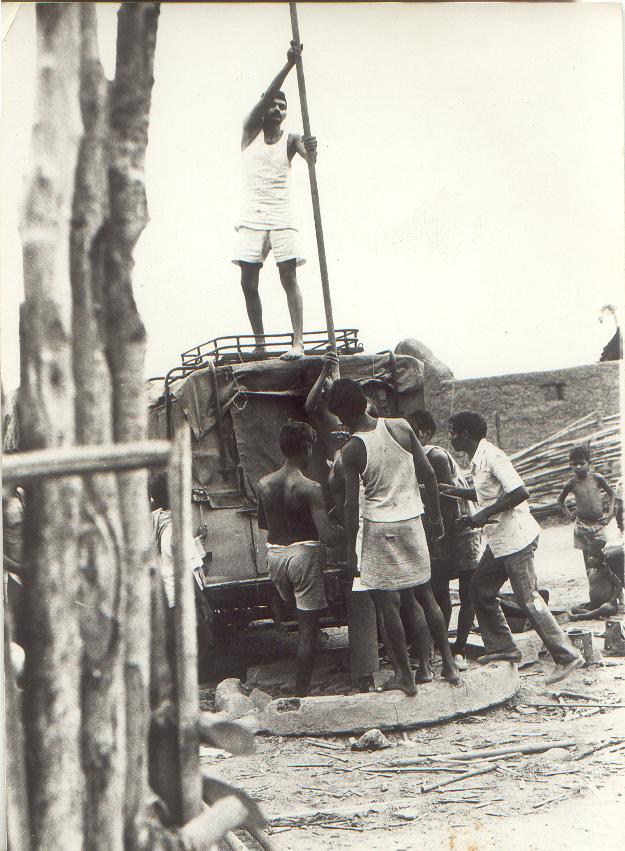
Mahua is cultivated in warm and humid regions for its oleaginous seeds (producing between 20 and 200 kg of seeds annually per tree, depending on maturity), flowers and wood. The tree is considered a boon by the native tribes who are forest dwellers and keenly conserve this tree. The flowers are used to produce an alcoholic drink in tropical India. This drink is also known to affect the animals. Tribal people consider the tree and Mahua drink as part of their cultural heritage. It is an obligatory item during celebration and evening activities.
Unfortunately, this drink has become an addiction and the entire family suffers as a result. There are many cases where both parents are addicted to Mahua drink.
Under its "Village Development Program", Lok Biradari Prakalp was working on lake excavation at Jinjgaon. The Prakalp always gets an agreement signed by Gramsabha before starting such work. One of the important clauses is "No alcohol consumption". Gramsabha agreed to sign it but a senior member, Mr. Sitaram Madavi, asked a question.
If we don't make liquor from Mahua flowers, how do we make up our losses?
This question forced the Prakalp to look for alternatives. The brainstorm started. Aparna Pallavi, who was working on various possibilities for products from Mahua flowers, came up with an answer. She prepared few food items using Mahua flowers and the children from Sadhana Vidyalaya, Nelgunda (which is run by the Prakalp) particularly liked the ladoos. The Prakalp decided to start a food processing unit (FPU) which would prepare Mahua ladoos. The Mission of the project was to create awareness about Mahua flower as organic food among tribes and divert them from consumption of Mahua as liquor with an objective to empower tribal women. Mrs. Samiksha Amte and Mrs. Shanti Gaikwad have supervised this program so far.
The next step in this process was to look for a financer for the unit. The business proposal presentation was sent to Mr. Ramesh Madavi of MAVIM (Mahila Arthik Vikas Mahamandal) and he gave a positive response. A team of MAVIM visited the Prakalp to discuss the project further.
It was decided that MAVIM would allocate funds to the unit and take care of registrations like GST, PAN, food license, gas connection, machineries etc. SHG Federation (Triveni Sangam Lok Sanchalit Sadan Kendra) would work under the guidance of MAVIM and the Prakalp. It would decide the work place, recruit women, purchase raw material etc. The Prakalp would monitor the proceedings and help the unit as per the requirements like providing any specific materials, helping in storage etc. It was also decided that MAVIM and the Prakalp would be the first customers for Mahua ladoos.
The initial investment by MAVIM was Rs. 1.75 lakhs which included the work place rented at Hemalkasa (Rs. 10 thousand per year). The team had 7 lady workers initially. Now, the number has gone up to 12. It also has a male member who takes care of transport, maintain expense details etc. Daily work timings are 9AM to 6PM except Sunday.
The Mahua flowers are washed first. They are Sun dried and crushed with Kaandap machine. Ladoos are prepared using this powder, Jaggery, Ambadi seeds or groundnuts and oil. In a day, the unit can make up to 500 ladoos. This requires about 25 kg of Mahua flowers, 10 kg of Jaggery and 6-7 kg of Ambadi seeds or groundnuts.
Ladoos are packed in a box. Each box has 10 ladoos. About 200-300 boxes are sold per month at the sale center of Lok Biradari Prakalp. That’s about 2000-3000 ladoos per month !!
The Prakalp used to pay Rs. 10 per ladoo. From March 2018, the payment has been raised to Rs. 12 per ladoo. The Prakalp is also planning to make chocolates from Mahua flowers in the future.
A team from the unit attended a seminar at Dantewada, Chattisgarh in September 2017. The collector, Mr. Saurabh Kumar, requested the team to provide Mahua ladoo training to tribes of Dantewada. The training was conducted at Lok Biradari Prakalp between 5-7 December 2017.
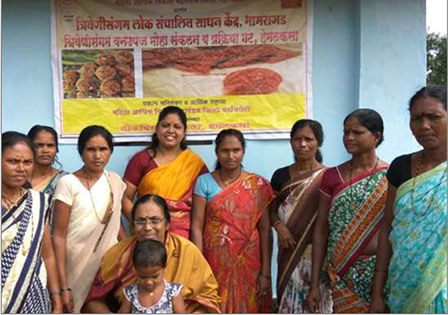

Hemalkasa and surrounding villages are known for thick forests and natural beauty. However, surrounding also suffers from some nature problems. One of them is water conservation. The soil of Hemalkasa and surrounding villages does hold water. Despite of heavy rain every year, villagers have to struggle for potable water and irrigation water. All of the villages are dependent on natural sources of water such as river or canal. So, once the rainy season is over, each one of us (humans and animals) have to struggle for water.
Mr. Aniket Amte, a Director of Lok Biradari Prakalp, came up with an unique idea and asked villagers, "Can we check for other water resources such as huge lake? If we excavate a huge lake according the population of village, each one of us will have enough water for irrigation and drinking. It will also help
to increase underground water level. Each one of us can take multiple crops instead of only one per year."
But he also introduced some unique thoughts as follows.
1. Villagers have to contribute 10% of total value of excavation work, so that each one will own the lake and everyone will take care of it.
2. None of them should drink alcohol in village.
3. None of them should eat tobacco.
4. Save trees and plant trees.
The president of Gramsabha has to conduct a meeting and he should get 70% agreement from villagers to follow the rules. Once it's done, we can go ahead and start the excavation work. And the day was 6th January 2017, when we started excavation work at the "Bejur" village which is about 3kms towards Allapalli from Lok Biradari Prakalp, Hemalkasa. The size of the lake is 100 x 50 meters with 3 meters depth. The excavation work completed in 15-20 days. The total cost for excavation work was around 10 lakh rupees. And so on ...... we have completed the excavation work at several villages.
1. Bejur
2. Kumarguda
3. Hemalkasa
4. Nelgunda
5. Darbha
6. Halaver
7. Pidmili
Creating a second income source
The communities residing in the dense forest of Hemalkasa and surrounding are mainly gatherers and hunters. After so many decades passed, they are settling down and turned to farming. Farming is the only income source for all of them. To give them equal opportunity and to create second option for income, Lok Biradari Prakalp decided to give them formal training of fish farming.
Formal training of fish farming, fish hatchery and fish nursery has been provided at Dimbe, Pune to 5 personnels from 5 different villages. Now, all of them are well trained and they will pass on the knowledge to rest of the villagers, so that all of them will be more confident and will look at fish farming as additional income source.
Let the pictures speak now.
